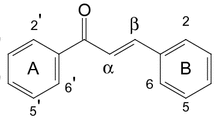Abstract
From the dried rhizomes of Curcuma comosa cultivating in Thailand, 26 known sesquiterpenes were isolated: zederone, zederone epoxide, furanodienone, isofuranodienone, 1(10)Z,4Z-furanodiene-6-one, glechomanolide, dehydrocurdione, neocurdione, curdione, 7α-hydroxyneocurdione, 7β-hydroxycurdione, germacrone-1(10),4-diepoxide, germacrone, 13-hydroxygermacrone, curzerenone, curcolonol, alismol, alismoxide, zedoarondiol, isozedoarondiol, procurcumenol, isoprocurcumenol, aerugidiol, zedoalactone B, curcumenone, and curcumadione. Their structures were elucidated on the basis of physicochemical evidence. Among them, glechomanolide, curzerenone, curcolonol, alismol, alismoxide, and zedoarondiol showed no significant optical activities, so they may be artifact products during the isolation or drying process.
Similar content being viewed by others
References
Sodsai A, Piyachaturawat P, Sophasan S, Suksamrarn A, Vongsakul M (2007) Suppression by Curcuma comosa Roxb. of pro-inflammatory cytokine secretion in phorbol-12-myristate-13-acetate stimulated human mononuclear cells. Int Immunopharmacol 7:524–531
Jantaratnotai N, Utaisincharoen P, Piyachaturawat P, Chongthammakun S, Sanvarinda Y (2006) Inhibitory effect of Curcuma comosa on NO production and cytokine expression in LPS-activated microglia. Life Sci 78:571–577
Suksamrarn A, Eiamong S, Piyachaturawat P, Byrne LT (1997) A phloracetophenone glucoside with choleretic activity from Curcuma comosa. Phytochemistry 45:103–105
Yoshikawa M, Morikawa T, Nakano K, Pongpiriyadacha Y, Murakami T, Matsuda H (2002) Characterization of new sweet triterpene saponins from Albizia myriophylla. J Nat Prod 65:1638–1642
Matsuda H, Pongpiriyadacha Y, Morikawa T, Ochi M, Yoshikawa M (2003) Gastroprotective effects of phenylpropanoids from the rhizomers of Alpinia galanga in rats: structural requirements and mode of action. Eur J Pharmacol 471:59–67
Matsuda H, Morikawa T, Managi H, Yoshikawa M (2003) Antiallergic principles from Alpinia galanga: structural requirements of phenylpropanoids for inhibition of degranulation and release of TNF-α and IL-4 in RBL-2H3 cells. Bioorg Med Chem Lett 13:3197–3202
Morikawa T, Kishi A, Pongpiriyadacha Y, Matsuda H, Yoshikawa M (2003) Structures of new friedelane-type triterpenes and eudesmane-type sesquiterpene and aldose reductase inhibitors from Salacia chinensis. J Nat Prod 66:1191–1196
Kishi A, Morikawa T, Matsuda H, Yoshikawa M (2003) Structures of new friedelane- and norfriedelane-type triterpenes and polyacylated eudesmane-type sesquiterpene from Salacia chinensis Linn. (S. prinoides DC., Hippocrateaceae) and radical scavenging activities of principal constituents. Chem Pharm Bull 51:1051–1055
Yoshikawa M, Pongpiriyadacha Y, Kishi A, Kageura T, Wang T, Morikawa T, Matsuda H (2003) Biological activities of Salacia chinensis originating in Thailand: the quality evaluation guided by α-glucosidase inhibitory activity. Yakugaku Zasshi 123:871–880
Matsuda H, Tewtrakul S, Morikawa T, Nakamura A, Yoshikawa M (2004) Anti-allergic principles from Thai zedoary: structural requirements of curcuminoids for inhibition of degranulation and effect on the release of TNF-α and IL-4 in RBL-2H3 cells. Bioorg Med Chem 12:5891–5898
Morikawa T, Matsuda H, Yamaguchi I, Pongpiriyadacha Y, Yoshikawa M (2004) New amides and gastroprotective constituents from the fruit of Piper chaba. Planta Med 70:152–159
Matsuda H, Morikawa T, Xu F, Ninomiya K, Yoshikawa M (2004) New isoflavones and pterocarpane with hepatoprotective activity from the stems of Erycibe expansa. Planta Med 70:1201–1209
Matsuda H, Ando S, Morikawa T, Kataoka S, Yoshikawa M (2005) Structure-activity relationships of 1′S-1′-acetoxychavicol acetate for inhibitory effect on NO production in lipopolysaccharide-activated mouse peritoneal macrophages. Bioorg Med Chem Lett 15:1949–1953
Ando S, Matsuda H, Morikawa T, Yoshikawa M (2005) 1′S-1′-acetoxychavicol acetate as a new type inhibitor of interferon-β production in lipopolysaccharide- activated mouse peritoneal macrophages. Bioorg Med Chem 13:3289–3294
Morikawa T, Xu F, Matsuda H, Yoshikawa M (2006) Structures of new flavonoids, erycibenins D, E, and F, and NO production inhibitors from Erycibe expansa originating in Thailand. Chem Pharm Bull 54:1530–1534
Matsuda H, Yoshida K, Miyagawa K, Asao Y, Takayama S, Nakashima S, Xu F, Yoshikawa M (2007) Rotenoids and flavonoids with anti-invasion of HT1080, anti-proliferation of U937, and differentiation-inducing activity in HL-60 from Erycibe expansa. Bioorg Med Chem 15:1539–1546
Yoshikawa M, Xu F, Morikawa T, Pongpiriyadacha Y, Nakamura S, Asao Y, Kumahara A, Matsuda H (2007) Medicinal flowers. XII. New spirostane-type steroid saponins with antidiabetogenic activity from Borassus flabellifer. Chem Pharm Bull 55:308–316
Matsuda H, Morikawa T, Ninomiya K, Yoshikawa M (2001) Absolute stereostructure of carabrane-type sesquiterpene and vasorelaxant-active sesquiterpenes from Zedoariae Rhizoma. Tetrahedron 57:8443–8453
Hikino H, Konno C, Agatsuma K, Takemoto T, Horibe I, Tori K, Oeyama M, Takeda K (1975) Sesquiterpenoids. Part XLVII. Structure, configuration, conformation, and thermal rearrangement of furanodienone, isofuranodienone, curzerenone, epicurzerenone, and pyrocurzererenone, sesquiterpenoids of Curcuma zedoaria. J C S, Perkin I:478–484
Brieskorn CH, Noble P (1983) Furanosesquiterpenes from the essential oil of myrrh. Phytochemistry 22:1207–1211
Yoshikawa M, Matsuda H (2002) Terpenoid constituents of Alismatis Rhizoma—structure, biological activity, and chemical change of terpenoids during processing. J Trad Med 19:119–128
Hikino H, Takahashi H, Sakurai Y, Takemoto T, Bhacca NS (1966) Structure of zederone. Chem Pharm Bull 14:550–551
Hano Y, Akiyama A, Nomura T (1997) Stereochemistries and CD spectra of two new sesquiterpenoids from the fresh rhizoma of cultivated Curcuma sp. in Miyakojima island. Tennen Yuki Kagobutsu Toronkai Koen Yoshishu 39:511–516
Gao J, Xie J, Iitaka Y, Inayama S (1989) The stereostructure of wenjine and related (1S, 10S), (4S, 5S)-germacrone-1(10), 4-diepoxide isolated from Curcuma wenyujin. Chem Pharm Bull 37:233–236
Syu W, Shen C, Non M, Ou J, Lee G, Sun C (1998) Cytotoxicity of curcuminoids and some novel compounds from Curcuma zedoaria. J Nat Prod 61:1531–1534
Acknowledgments
This research was supported by the 21st COE Program, Academic Frontier Project, and a Grant-in-Aid for Scientific Research from MEXT (the Ministry of Education, Culture, Sports, Science and Technology of Japan).
Author information
Authors and Affiliations
Corresponding author
Rights and permissions
About this article
Cite this article
Qu, Y., Xu, F., Nakamura, S. et al. Sesquiterpenes from Curcuma comosa . J Nat Med 63, 102–104 (2009). https://doi.org/10.1007/s11418-008-0282-8
Received:
Accepted:
Published:
Issue Date:
DOI: https://doi.org/10.1007/s11418-008-0282-8




